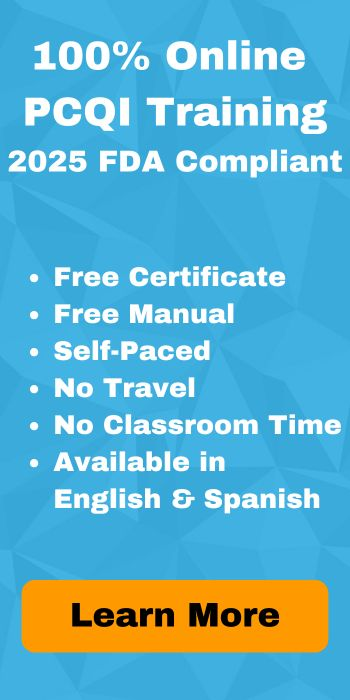
Food safety problems rarely appear overnight. Most of the time, they start with a minor and overlooked procedure, a misunderstood requirement, or an employee unsure of their role or when to ask for help. These food safety knowledge gaps often go unnoticed until they become serious issues that lead to audit failures, regulatory action, or product recalls.
The good news? You can identify weak spots early and fix them before they cause damage. ImEPIK® makes this possible with scenario checks as well as pre- and post-assessments built into its online PCQI training.
Why Identifying Food Safety Knowledge Gaps Matters
A knowledge gap is simply the difference between what employees need to know and what they currently know. In food manufacturing, even a small food safety knowledge gap can have big consequences.
For example:
- An employee may understand HACCP principles but fail to connect them with FSMA’s Preventive Controls requirements.
- A team may know how to document cleaning schedules but overlook allergen control records.
- A manager may understand supplier verification as a requirement but not know how to evaluate supporting documents.
Each of these food safety knowledge gaps weakens your food safety program and exposes your business to compliance risks. That’s why spotting them early is critical.
How Do You Identify Food Safety Knowledge Gaps?
There are many ways to uncover gaps in knowledge and performance. Some businesses rely on third-party audits, but waiting until an auditor arrives is too late.
Practical approaches include:
- Regular self-checks and quizzes
- Observing employees on the floor
- Manager-led discussions
- Structured training assessments
- Mock scenario drills
- Internal audits
The goal is to measure not only what people know but also how well they apply that knowledge in real-world situations.
What Technique Is Most Effective for Identifying Gaps?
The most effective technique for identifying food safety knowledge gaps is pre- and post-assessment. This process gives you a clear picture of what employees know before training and how much they improve afterward.
ImEPIK® integrates this into its online PCQI training. Learners answer scenario-based questions that reflect actual challenges in food safety. Results highlight weak areas that require extra focus, whether that’s hazard analysis, sanitation controls, or recordkeeping.
By comparing pre- and post-training results, companies can track progress and prove that employees gained the skills necessary to carry out FSMA-compliant food safety plans.
The Five Types of Gaps
Identifying gaps is not just about missing knowledge.
Different types impact food safety:
- Knowledge Gap – Employees don’t have the information they need. Example: not understanding allergen cross-contact risks.
- Skills Gap – They know the information, but can’t apply it. Example: unable to create a process flow diagram.
- Motivation Gap – Employees lack engagement in training. Example: rushing through modules without absorbing the content or practicing critical thinking.
- Communication Gap – Teams misunderstand roles and responsibilities. Example: unclear handoffs between sanitation and production staff.
- Performance Gap – Results fall short even with proper training. Example: poor recordkeeping despite available tools.
Each of these weakens food safety controls. Recognizing the type of gap helps managers address the root cause instead of just the symptoms.
Role of PCQI Training in Closing Gaps
PCQI training is not just a regulatory requirement. It is also a practical tool for building knowledge and skills across your food safety team.
Through ImEPIK®, companies gain access to interactive training available in English and Spanish. The course content is the recognized curriculum by FDA FSMA, BRCGS, and CFIA requirements. By combining HACCP and PCQI certification-level training, learners understand both foundational and advanced food safety systems.
This makes PCQI training a direct solution for closing gaps in hazard identification, preventive controls, and recordkeeping.
ImEPIK®’s Pre- and Post-Assessment Advantage
Unlike basic training programs, ImEPIK® goes beyond delivering information. Its pre- and post-assessments allow businesses to measure knowledge levels at the start and verify learning outcomes at the end.
Scenario-based modules make sure learners apply what they know, not just memorize facts. This builds confidence while ensuring employees can perform critical food safety tasks correctly. The course models food safety culture among the entire team and organization.
On completion, learners receive a certificate of completion recognized by the FDA—proof that they have taken the curriculum to qualify as a Preventive Controls Qualified Individual under FSMA’s Preventive Controls for Human Food rule.
Conclusion: Stay Ahead by Closing Food Safety Knowledge Gaps Early
Food safety knowledge gaps don’t have to turn into compliance problems. By using assessments and structured training, you can detect weaknesses early, strengthen your food safety program, and protect your business.
ImEPIK® provides the tools you need to do this with confidence. Explore our PCQI online training options and keep your team audit-ready.

